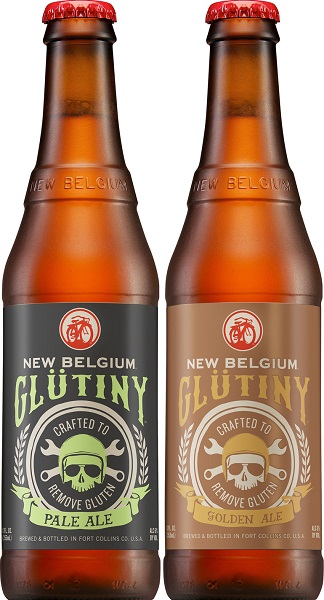Start 14-Day Trial Subscription
*No credit card required

Alternative Grain Beer and Black IPA
Alternative Grain Beer
When one thinks about beer, a few simple descriptors immediately spring to mind: carbonated, alcoholic, crushable, etc. When one thinks about the ingredients found in beer, the same could probably be said: water, barley, hops and yeast. These four simple ingredients have led to thousands of years of beverage experimentation and they continue to be the baseline for the wonderful, avant-garde brews that pop up every day in the world of craft beer.

However, there is a growing cache of brewers that do not follow the ancient belief that to make a "capital-B" beer you have to use some combination of those ingredients. It also happens to be in-line with the general pushback against gluten in modern society.
As the son of someone who suffers from Celiac Disease (a disease that causes digestive problems and small intestine infections if gluten is digested), I know a thing or two about gluten-free products. While most people think of barley and wheat as essential ingredients in beer, Alternative Grain Beers buck this belief.
When one thinks about the ingredients found in beer, four simple ingredients spring to mind: water, barley, hops and yeast. However, there is a growing cache of brewers that do not follow the ancient belief that to make a "capital-B" beer you have to use some combination of those.
Alternative Grain Beer is a style in which additional or non-standard brewing grains are added or used exclusively in the making of the beer. A few of the grains that may be employed are corn, oats, buckwheat, spelt, millet, sorghum, rice and quinoa. As long as the beer contains one of these ingredients in some form, it’s an Alternative Grain Beer.
While the base style of the beer will greatly affect the qualities of the beer, a few common threads are found in all Alternative Grain Beers. Firstly, no matter what the base style is, some additional haziness may be present. The alternative grains will also provide almost all of the aroma of the beer, and they almost always evince an unidentifiable nutty or grainy character.
When it comes to flavor and body, different grains have different effects on the finished product. Gluten-free grains will almost always decrease the body of a beer, making for a lighter mouthfeel; however, they often create additional creaminess in the mouth, making up for the beer’s lack of body. Additional alternative grains should never overpower the base beer style’s flavor hallmarks and should always enhance the overall flavor and drinking experience.
While many people think that gluten intolerance and gluten allergies are just a myth cooked up by sensationalist media monoliths, I can tell you from personal experience that Celiac Disease is indeed very real, and it makes eating bread or drinking beer a deadly gamble. It’s nice to be able to find tasty craft beers that cater to this ever-growing audience yet still find ways to push the envelope with interesting flavors and ingredients. Also, even if you don’t have a gluten allergy, give an Alternative Grain Beer a try. The lighter mouthfeel and lower calorie count might make you an Alt-Grain believer.
STATS:
OG, IBU, SRM, ABV: all vary by base style
Commercial Examples: Bards Tale Dragon’s Gold, Sprecher Shakparo, Green’s Great Discovery Amber, Green’s Grand IPA, Lakefront New Grist, New Planet Pale Ale, Two Brothers Prairie Path Ale, Ground Breaker Olallie



